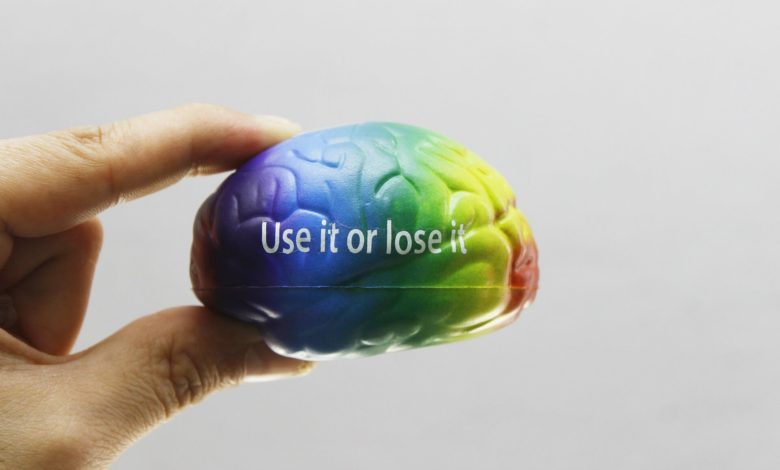The Relationship Between Brain, Intelligence and Logic

In this article, I will try to explain the relationship between the brain, intelligence and logic, as a result of my research, in the light of the information detected on the brain. First, I will give you comprehensive information about the history of brain research and how the brain works.
Since human consciousness and emotions were thought to be the source of the heart in ancient times, not much was known about the brain as not much research has been done on the brain. BC when the source of thoughts and emotions was the brain, not the heart. In the 450s, he revealed a scientist named Alkmaeon. The first book on the anatomy of the brain was published in 1664. In the 18th century, the scientist named Galvani showed that the movements of the human body are caused by electric current, and the foundation of neurophysiology (science that studies the function of nerve cells) was laid. In the 1800s, it was shown that nerve cells emerging from brain cells went to the spinal cord and from there to other organs. The acceleration of the studies on the brain was achieved with the definition of Parkinson’s disease in 1817. With the incident known as the gage case, the iron rod stuck in the front of the brain did not cause the death of the person, but caused personality disorder. Thanks to this event, it was understood that the frontal lobe in the front of the brain is related to personality. In the late 19th century, mental illnesses such as depression and schizophrenia were identified and their relationship with the brain was investigated. In the early 20th century, Sigmud Freud introduced the concept of the subconscious.
When examined physically, the human brain visibly looks like a walnut inside the shelled walnut. The brain is our fluid organ, 60% of which consists of fat. It is very firmly protected by the skull and placed in a way that makes ideal use of every point in the skull. The brain has approximately 100 billion nerve cells (neurons), as well as support cells and communication networks that work with them.
It consists of four parts: the brain, the brainstem, the limbic system, the cerebellum and the cerebrum. The brain stem consists of three parts: midbrain, pons and spinal cord. Brain nerves that exit the brain and go to the face and spinal cord exit from the brain stem. Important brain functions such as breathing, swallowing, and the regulation of heart rhythm take place here. However, the brain stem to fulfill these functions depends on the continuity of its connection with the upper part of the brain. The limbic system, on the other hand, is the part of the brain that is located in the depths of the brain and is mainly responsible for the regulation of emotions and behaviors, long-term memory, motivation and the processing of the sense of smell. Many structures that contain important functions such as the hippocampus, anterior part of the thalamus, hypothalamus, entorhinal cortex, and fornix are found in this part. The cerebellum is the structure that basically controls the balance and movement events in the body, and is effective in remembering, planning, being creative and using language.
The cerebrum, which forms the largest volume in the brain, consists of the right and left lobes. The right lobe governs the left part of the body, and the left lobe rules the part of the body between the right Brain, Intelligence and Logic. Therefore, people whose right lobe is damaged will have paralysis on the left side of their body, and people with a left lobe will be paralyzed on the right side of their body. The left side of the brain is a mathematically inclined logician, while the right side is receptive and creative. Although these two parts seem separate from each other, they complement each other. For example; W.J., whose left brain was damaged during the Second World War. The right body of a person named is paralyzed. However, this paralysis situation started to spread to the left part of the body over time. Thereupon, the right lobe and the left lobe were surgically separated from each other. As can be understood from here, the right and left lobes complement each other. This is why activities need to be adjusted accordingly using both.
The flow of information from the brain to the tissues, organs and muscles in the body is provided by neuronal cells. All the movements, muscle movements, senses and thoughts made with the human body are made thanks to these. The 3-4 mm layer forming the outer surface of the cerebrum, where the majority of nerve cells and support cells are located, is called the cortex. This part is also known as gray matter. The brain consists of four lobes under the cortex layer. The one on the front is called the frontal lobe, the one on the middle is called the perital lobe, the one on the posterior occiperital, and the one on the side is called the temporal lobe. Each lobe has its own specific functions.
Among the neuron cells, there are cells called glia that feed and clean them. Neuron cells consist of a large body and a structure with a tail-shaped thin extension (axon). Axons are surrounded by a sheath called myelin, and this sheath enables electrical signals to be transmitted faster. Therefore, the higher the quality of the myelin sheath, the better the quality of electrical signals. Studies show that the quality of the myelin sheath can be increased by physical activities and some diets. In neurons, the conduction is received by dendrites in the body and transferred to other neuronal cells, tissues or organs by axons. The conduction exchange between nerve cells is provided by the replacement of positive electrically charged sodium and potassium with negative electrically charged chlorine. The electrical signals generated in the cell membrane reach the axon tip at a speed of 200-300 km per hour via axons. The electrical signal coming to the end of the axon causes the secretion of messenger molecules such as acetylcholine, dopamine and noradrenaline, which are called very special chemical neurotransmitters. There are many messenger molecules called neurotransmitters in the brain. Their structure consists of protein or amino acids. These messenger molecules enable the message to be transferred to other neuronal cells or target tissues and organs, enabling them to activate. The tasks in target cells are determined according to the structure of the molecule secreted. Many hormones found and secreted in the brain also work in brain functions. Since acetylcholine, one of the messenger molecules, is thought to have an important role in memory, attention and learning functions, it is thought that Alzheimer’s disease occurs as a result of the death of the cells that produce this molecule. Another messenger molecule used in memory and learning functions is noradrenaline.
As you can see, the brain has a complex structure. Each cell or part complements the others. So much so that a part may need other parts in order to fully fulfill its task. On the other hand, when some parts are damaged or unusable, other parts complete the task partially.
After talking so much about the brain, let’s come to its connection with intelligence. Intelligence is the speed at which the brain learns and benefits from what is learned. Creativity and discovering something is a task of intelligence. However, there are no intelligence centers in the inner part of the brain. Differences in intelligence between individuals are thought to arise from many areas such as the number of dendrites, the number of neurons, the number of synapses, the quality of the information transfer in the synapses, or the quality of myelin, the amount of messenger molecules. It is said that the most effective of these is the quality of myelin. Because the better the quality of myelin, the better and faster the transmission of electrical signals.
Intelligence formation and development depends on 80% inheritance, 20% on body and mind state, social and family conditions. Therefore, identical twins have almost the same intelligence even if they grow up in different environments. However, brain diseases and head injuries disrupt intelligence development. Intelligence development continues rapidly until the age of 5. Intelligence development slows down at age 14 and beyond.
There is a positive relationship between the brain and intelligence. In other words, the strong, high-quality structure of the parts in the brain is effective in the higher level of intelligence. For example, the quality of the myelin sheath on the nerve cells responsible for the transmission of messages between the brain cells and all the cells of the body is effective in the speed or slowness of the transmission. The perception of the visual or auditory message coming from the outside by the brain and its analysis by kneading is related to the speed of the nerve cells. Second, some of the messenger molecules produced by the brain have an effect on learning and memory. Therefore, messenger molecules produced at the desired level can ensure that the learning level is at high levels. This is also a sign of intelligence. In short, we can refer to intelligence as the brain’s ability to process. However, since these and similar brain parts and functions cannot be medically intervened, no scientific effect can be made in increasing the level of intelligence. However, as various physical activities and eating habits contribute to the development of brain parts that affect the intelligence level, they also have a positive effect on the development of intelligence up to a certain age.
In general, the tests in which various types of questions are asked to measure an individual’s thinking structure, perception style, ability to find solutions to problems and the performance of managing the solution process are called intelligence tests. With this test, the function of each region in the individual’s brain is observed and it is determined which of these regions are dominant or weak. Thus, areas where the individual shows high performance are revealed. Many types of intelligence tests are performed, such as the Logical Intelligence Test (IQ), the Emotional Intelligence Test (EQ) and the Mental Intelligence Test (SQ). Intelligence tests are applied to these in a way that varies according to age, gender and the environment. The most widely used intelligence test today is the Logical Intelligence Test (IQ).
When the brains of people with mental retardation were examined, it was seen that there were too many snaps and more connections than necessary. However, when the brains of genius people were examined, it was found that only the necessary amount of snaps were formed. This situation is thought to be caused by solving problems using a small part of the brain.
Let’s come to the logic. Logic is the way of thinking of the human brain to distinguish between right and wrong or to find the shortest way to reach the truth. It is one of the basic thinking skills that human beings should have. The stronger the ability of an individual to establish a logical connection between what he learns by seeing, hearing, and reading, the stronger the learning skill and retention of what he has learned. This situation makes the person advantageous over his rivals. Since logic is a discipline of thought, it can be developed with practice. Solving numerical puzzles like Sudoku, solving math problems, reading detective novels, playing logic games like chess are some logic-enhancing practices. Intelligence should not be confused with logic. Logic is the art of using intelligence to arrive at the correct result. Therefore, it is wrong to say that people with high levels of intelligence are also capable of reasoning. On the other hand, logic can be developed with various exercises, but intelligence is very difficult to develop as most of it is inherited and stops its development after a certain age.
Intelligence can be measured as the perception speed of the brain. Logic, on the other hand, is the way of thinking that enables the perception in the brain to be activated quickly. Therefore, the effect of intelligence and logic is separate in the realization of the activity. In other words, people who are intelligent in solving a problem and people who are not intelligent but have the ability to use their logic well can reach the result in the same time. In short, intelligence is a gift of God and the vast majority (80%) of it is inherited. However, the ability to use logic can be developed as a result of one’s own efforts. For this, it is necessary to work, not give up and show effort. I’m not talking here that you just have to make an effort to solve the problem you are facing. I mean the effort you put into developing your ability to use your logic. You might say, “I constantly solve puzzles, read detective novels, play chess, but I didn’t see much of it”. Remember that this type of exercise may not be as effective as pain relief. However, after a certain period of time, it can be realized that the logic ability is strengthened with the increase of the solutions produced on problem solving and the shortening of the solution time.
Since the vast majority of intelligence is inherited, there is little possibility for it to be furthered. However, the development of logical thinking ability can be achieved through various activities. Therefore, if you concentrate on the thoughts and behaviors that can be done, you will tire yourself less and wear it out. In addition, by strengthening your logic ability, you can reach the level where you can compete with people you think are smarter than you.
People who have the ability to reason;
• Thanks to their easy connection between events and objects, the time to reach the result is shortened.
• The error rate decreases as they do the judgment of each step and act by thinking before and after each step so that they do not encounter any problems. In other words, it takes its steps more firmly. This situation is a guarantee rather than perfectionism. It is to think ahead and take steps accordingly in order not to encounter more complex problems later on.
• Thinking rationally has an impact on children’s academic success. Because he will constantly question what has been learned in his brain, and he will try to establish a connection between what he learned before, and he will in a way engrave what he has learned.
• As rational individuals frequently touch and scrutinize each situation, the possibility of success in the strategies they choose in business life increases.
In fact, logic is at the forefront in many jobs. If you can use your logic, you can achieve successful works. If you can be sensible, you can create an ideal group of friends around you. If you are reasonable, you can approach the problems you encounter positively and reach a solution in a shorter time. You can choose what is useful for you and benefit from what those around you say. Therefore, logic should not be underestimated and the existing effort should be shown for its development. It should not be forgotten that logic continues to develop throughout life, and various activities for its development also protect you against brain-borne ailments that occur mostly in advanced ages.
If we explain it with an analogy, the brain can be called the soil, the intelligence the seed, the logic the agricultural engineer. Here, of course, when the soil and seed come together, the product can be taken. However, when the agricultural engineer steps in, you will get a higher quality and more abundant product. Therefore, the brain is undamaged, intelligence is at a high level, and if these are crowned with logic, superior achievements can occur. If we look at it from another angle; When intelligence and brain are at a medium level, you can raise this level with logic and achieve good success.





